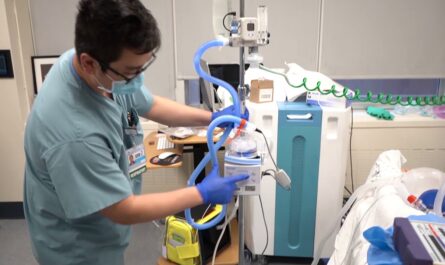Introduction to Antimicrobial Susceptibility Testing
Antimicrobial susceptibility testing (AST), also known as antibiotic sensitivity testing, is a laboratory procedure used to determine which antibiotics will effectively treat an infection caused by a bacteria, fungus, or other microorganism. The results of AST help healthcare providers determine the most appropriate antibiotic to prescribe for a particular infection. This targeted treatment approach helps ensure the infection is cured while preventing the unnecessary use of antibiotics that would not work.
Importance of AST in Combating Antimicrobial Resistance
With the rising threat of antimicrobial resistance, Antimicrobial Susceptibility Testing has taken on increasing importance in recent years. When an antibiotic is prescribed without knowing whether the infecting pathogen is susceptible or resistant, there is a greater chance it will be ineffective at curing the infection. Ineffective antibiotic use promotes the spread and evolution of resistant bacteria. AST helps curb antimicrobial resistance by guiding clinicians to prescribe antibiotics only when they are likely to work based on the pathogen’s susceptibility profile. This targeted approach reduces unnecessary antibiotic exposure that drives resistance. Ensuring each patient receives an antibiotic that will cure their infection is vital for slowing the emergence and spread of resistant strains.
Common AST Methods: Disk Diffusion and Broth Microdilution
There are various laboratory methods used for AST, but the two most widely used techniques are disk diffusion testing and broth microdilution testing. Disk diffusion testing involves placing filter paper disks impregnated with standardized concentrations of antibiotics onto an agar plate seeded with the test organism. If the organism is susceptible to an antibiotic, it will be unable to grow in the zone of inhibition surrounding the disk. Broth microdilution testing involves inoculating a microorganism into wells of a plastic tray containing serial dilutions of antibiotics in broth. The minimum inhibitory concentration, or lowest concentration of antibiotic that prevents visible growth, is determined and used to classify the organism as susceptible, intermediate, or resistant. Both techniques provide comparable categorical results, though broth microdilution is considered the reference standard method.
Automated Systems Streamline the Process
While disk diffusion and broth microdilution remain mainstay Antimicrobial Susceptibility Testing methods, many clinical laboratories now utilize automated instruments to streamline the testing process. Automated systems can incubate, read, and interpret broth microdilution trays or perform disk diffusion tests with all calculations and measurements handled by the instrument. This reduces hands-on technician time and subjective interpretation of results. Instrumentation also standardizes procedures between technicians and laboratories. It allows for high-throughput testing of dozens of antibiotics against many patient isolates simultaneously. The automation increases efficiency to provide clinicians with timely AST results to guide patient care decisions.
Phenotypic versus Genotypic Tests
Traditional AST methods like disk diffusion and broth microdilution are considered phenotypic tests as they measure the observable growth characteristics of microorganisms exposed to antibiotics. In contrast, molecular diagnostic techniques known as genotypic tests detect the presence or absence of genes associated with antibiotic resistance. While genotypic methods provide faster results and do not require viable organisms, phenotypic tests remain necessary to account for factors like efflux pumps, porins, and other mechanisms influencing antibiotic susceptibility beyond just resistance genes. A combination of both genotypic and phenotypic approaches may ultimately have the greatest clinical utility by comprehensively characterizing resistance mechanisms. Going forward, molecular diagnostics paired with automated phenotypic testing can optimize AST.
Rapid Diagnostics Enable Timely Treatment
For critically ill patients, traditional AST methods providing results in one to three days do not support immediate clinical decision making. Rapid diagnostic technologies have emerged to address this need for timely resistance information to guide initial empiric therapy. Examples of such rapid AST methods include polymerase chain reaction assays detecting genes associated with multidrug-resistant organisms, mass spectrometry identifying antibiotic-resistant patterns directly from positive blood cultures, and automated microfluidic platforms incubating and reading microdilution trays within hours. While their role is not to replace all traditional testing, rapid diagnostics enable effective empiric treatment in severe infections requiring intervention before standard AST results are finalized. Combining rapid tests strategically with conventional methods optimizes appropriate initial therapy and informed changes as resistance profiles become available.
Quality Control Ensures Reliable Results
Regardless of the specific AST method employed, stringent quality control measures must be followed to assure clinicians of result accuracy and consistency. Internal quality control involves testing standard reference strains alongside patient isolates to verify test performance meets acceptance criteria. External quality assessment programs, where reference laboratories distribute mock challenge isolates for testing, provide an important additional layer of quality oversight. Proper training, competency assessment, equipment calibration and maintenance are paramount. Consistent adherence to clinical and laboratory standard methodologies, such as the Clinical Laboratory Standards Institute guidelines for AST, guarantees test reliability health systems depend on to curb antimicrobial resistance. Quality control programs promote confidence in AST results applied for public health planning initiatives also utilizing resistance surveillance data.
Data Interpretation Guides Clinical Decisions
While standardized AST methods provide objective susceptibility categorizations, expert interpretation remains crucial for optimal clinical application. Factors like prior culture data, infection site/source, patient factors as well as known local epidemiology, including resistant pathogen endemicity and resistance mechanisms, aid analysis. Categorical results may warrant classification adjustments at times as well. For example, designated intermediate pathogens at infection sites traditionally difficult to treat may prompt alternate therapy. AST data must consider these wider contextual elements to recommend the treatment regimen most likely to cure an individual’s infection. Experienced clinical microbiologists and infectious diseases physicians collaborate with frontline providers through this interpretive interface for maximally informed antimicrobial stewardship.
Antimicrobial susceptibility testing informs tailored treatment selection through reliable detection of microbial resistance profiles. Automated methods now streamline traditional phenotypic assays for high throughput capacity supporting antimicrobial stewardship and surveillance efforts. Rapid diagnostics further enable timely empiric therapy guidance critical in severe infections. Robust quality assurance surrounding standardized AST methodologies, paired with expert data analysis addressing relevant clinical context, promotes optimized clinical use of antimicrobial susceptibility results. This targeted treatment approach curbs inappropriate antibiotic usage driving further resistance and improves patient outcomes through directed therapy against susceptible pathogens. AST thus remains a cornerstone technology supporting antimicrobial resistance containment efforts worldwide.
*Note:
1. Source: Coherent Market Insights, Public sources, Desk research
2. We have leveraged AI tools to mine information and compile it
About Author - Ravina Pandya
Ravina Pandya,a content writer, has a strong foothold in the market research industry. She specializes in writing well-researched articles from different industries, including food and beverages, information and technology, healthcare, chemicals and materials, etc. With an MBA in E-commerce, she has expertise in SEO-optimized content that resonates with industry professionals. LinkedIn Profile



